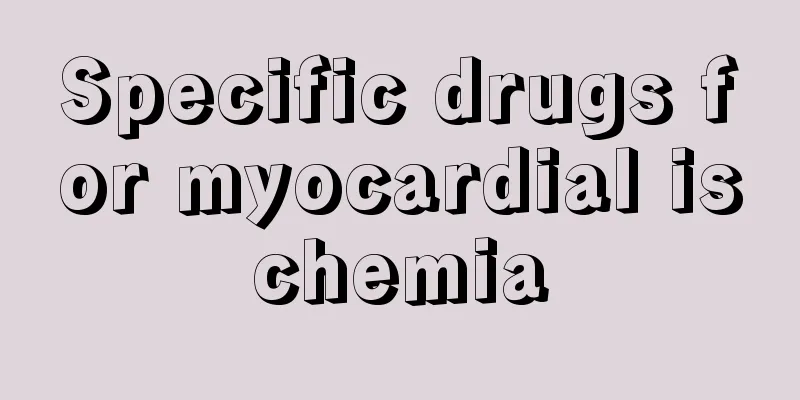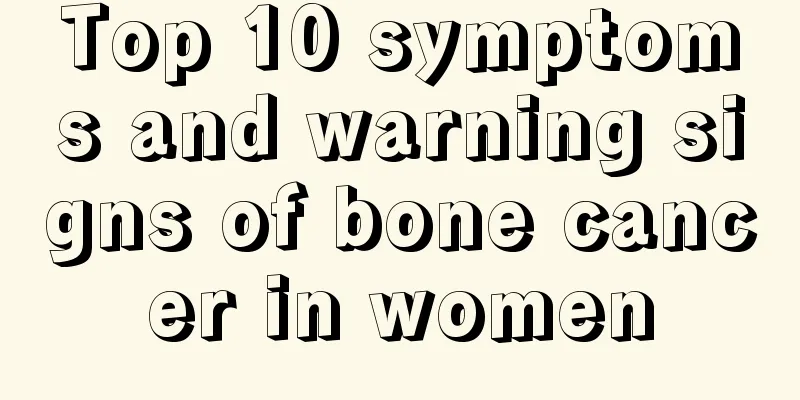Specific drugs for myocardial ischemia

|
Myocardial ischemia refers to a decrease in blood perfusion to the heart, which leads to a decrease in oxygen supply to the heart. This type of patient should first pay attention to choosing the appropriate method for treatment based on the actual condition of the body. There is actually no specific medicine for myocardial ischemia. Most of the time, this disease will occur after the age of 40. Regular life and regular check-ups are the basis for treating the disease. Disease Introduction Myocardial ischemia refers to a pathological condition in which the heart's blood perfusion is reduced, resulting in reduced oxygen supply to the heart, abnormal myocardial energy metabolism, and inability to support the normal functioning of the heart. Coronary artery stenosis or occlusion caused by coronary atherosclerosis is the main and most common cause of myocardial ischemia, which in turn leads to myocardial ischemia and hypoxia. The heart disease caused by this is what we often call "coronary heart disease", so coronary heart disease is the "culprit" of myocardial ischemia. Myocardial ischemia seriously endangers the health of middle-aged and elderly people. In recent years, with the improvement of living standards, coronary atherosclerosis has become younger, and some young people aged 20-30 have also shown symptoms of myocardial ischemia. Symptoms Myocardial ischemia often occurs after the age of 40, with an average prevalence of about 6.49%. With the improvement of people's living standards, the prevalence of myocardial ischemia in my country is currently showing an increasing trend year by year. Myocardial ischemia is a common and frequently occurring disease among middle-aged and elderly people. People at this age group should seek medical attention promptly and seek diagnosis as soon as possible if any of the following situations occur in their daily lives. (1) When tired or mentally stressed, dull pain or tightening pain may occur behind the sternum or in front of the heart, radiating to the left shoulder and left upper arm, lasting for 3-5 minutes and relieved on its own after rest, sometimes accompanied by profuse sweating. (2) Those who experience chest tightness, palpitations, and shortness of breath during physical activity and whose symptoms are relieved by rest. (3) Exercise-related sore throat, burning sensation, tightness, toothache, etc. (4) People who experience chest pain or tightness after a full meal, exposure to cold or drinking alcohol. (5) People who feel chest tightness and shortness of breath when sleeping with a low pillow at night and need to lie with a high pillow to feel comfortable; people who suddenly experience chest pain, palpitations, and difficulty breathing when sleeping soundly or lying flat during the day and need to sit up or stand up immediately to feel relieved. (6) Palpitations, chest tightness, shortness of breath, or chest pain during sexual intercourse or straining to defecate. (7) Sudden bradycardia, hypotension or syncope. |
<<: How to drink sparkling white wine
>>: Anterior lateral wall myocardial ischemia
Recommend
Pain in outer thigh joint
Thigh pain is a common symptom, and there are man...
What is nasopharyngeal malignant lymphoma and what is the difference between it and nasopharyngeal carcinoma
Nasopharyngeal malignant lymphoma, many people ar...
How about using traditional Chinese medicine to treat hamartoma
In addition to conventional drug treatment and su...
How to clean the contact lens box
Nowadays, there are more and more people with myo...
Will the canthus retract after opening the eye
In modern plastic surgery hospitals, people can c...
What to do if there is no yeast to make bread
Yeast is mainly used in making bread, but some fr...
The three most feared symptoms of bladder cancer
The three most feared symptoms of bladder cancer ...
What to do if lymphoma recurs
Oncologists say that lymphoma is the most serious...
Are radiotherapy suitable for elderly patients with mid-stage esophageal squamous cell carcinoma?
Malignant tumors consume the body's nutrition...
How to care for prostate cancer patients? What are the precautions for prostate cancer patients?
Although prostate cancer is not very common in li...
What are the causes of gastric cancer?
Gastric cancer is approaching young people under ...
What symptoms does a cold back belong to
When we are suddenly blown by cold wind, we will ...
TCM Syndrome Differentiation and Treatment of Liver Cancer
TCM Syndrome Differentiation and Treatment of Liv...
TCM treatment methods for invasive gastric cancer
The earlier esophageal cancer is discovered, the ...
Is it better to soak your feet in a wooden tub or in a foot bath?
The weather is getting colder and winter is comin...









